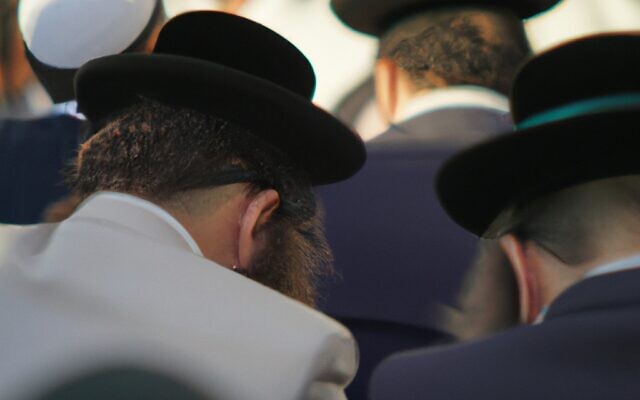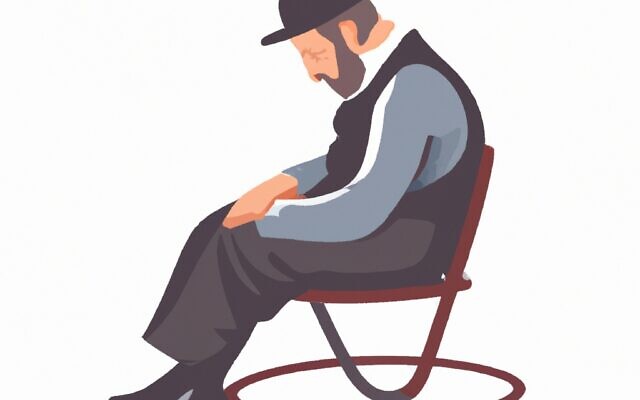Shiva: The Stages and Practices of Jewish Mourning
Judaism provides a specific set of guidelines on how to mourn the deceased.
Chana Shapiro is an educator, writer, editor and illustrator whose work has appeared in journals, newspapers and magazines. She is a regular contributor to the AJT.

Note: The author of this column has gathered information from Aish.com and My Jewish Learning.com, as well as Maurice Lamm’s classic,“The Jewish Way in Death and Mourning.” Mourning observances and customs may vary among Jewish congregations, respectively.
Judaism offers a structured path of physical, psychological, emotional, and spiritual healing for mourners. In this way, Judaism prescribes a pathway for mourners to gradually re-enter normal life. Judaism emphasizes that life is for the living, and, while Jews are given a way to honor the dead, we are not meant to be perpetual mourners.
A person sits shiva after losing a mother, father, spouse, brother, sister, daughter, or son. All other loved ones are mourned, but the observance of shiva does not apply,
Shiva literally means “seven,” referring to the first seven days following burial: the first day of the week of shiva starts immediately after the burial. After burial, mourners return to the “shiva house,” where they will sit together and be cared for by others who perform tasks and fulfill commitments for them. This week allows mourners to withdraw from worldly demands and offers time to start dealing with their loss. During this week, the mourners are treated with care, and their needs are met by friends and non-mourners in the family.
Most synagogues provide a seudah hevra’ah, a meal which the bereaved will eat upon returning from the burial. Often, a “meal train” will be established, through which all meals during shiva will be provided by others.

The object of visiting a shiva house is not to create a joyful atmosphere of laughter, casual socializing, and lots of eating. The shiva visit is designed to show concern for mourners. Some mourners want to share anecdotes and talk about the deceased. Sometimes, sitting in companionable silence with a mourner will be just the right way to visit. Visitors pay a “shiva call” to comfort mourners, but mourners are not hosts — they do not answer the door, rise to greet visitors, or lay out food or drinks for them.
During this week, mourners remain at home, and religious services come to them, so that the mourners can say the “mourner’s kaddish” prayer within a minyan. Visiting during the shiva period and joining in the daily prayers with mourners who are reciting mourner’s kaddish –these acts surround mourners with members of the community, so that mourners will not grieve in isolation.
Traditional shiva practices amplify the state of mourning. Mirrors are covered in the shiva house as a reminder that the focus is on mourning, not appearance. Other admonitions include not wearing leather shoes, not purchasing new clothing, not washing clothes, nor bathing for pleasure (other than for hygienic purposes), and physical relations between a man and wife are suspended.
During the week of shiva, mourners wear a piece of clothing which has been torn or cut during the funeral, a symbol of the end of the physical relationship between the mourner and the deceased. A seven-day candle burns in the shiva home, representing the hovering soul of the deceased, and mourners sit on low chairs or chairs without cushions. On the morning of the seventh day of shiva, mourners rise from their low chairs and are accompanied to take a short walk outside. Thus, the mourner physically re-enters the everyday world, and the seven-day confinement ends.
The next stage of mourning is Sheloshim, which means “thirty.” This transitional period consists of 30 days, which includes the first week of shiva. Mourners do not shave or cut their hair, and social engagements — especially events where music is played–are avoided; however, mourners return to work or school, and housekeeping chores, like meal preparation, may be resumed. At the end of Sheloshim, all restrictions end, except for individuals who are mourning parents.
Mourning one’s parents is a special obligation. This is an additional 11-month commitment. While returning to everyday life of work and household activities, certain prohibitions extend the state of honoring and mourning the people who gave one life. Over this period, one recites kaddish daily and refrains from large social gatherings, especially ones with live music. During this time, one does not buy or wear new clothes, and there are those who do not enter major business deals or attend simchas. After these 11 months, a person who has buried a parent is now ready to fully resume life.
It is customary to give tzedakah (charity) on the parent’s annual yahrzeit (date of death). A candle, which burns for 24 hours on the annual date of death, is lit for everyone for whom one sits shiva (parents, siblings, children), and one recites the Yizkor prayers (“Yiskor” means “remembrance”) for them and other deceased relatives four times a year during the memorial service on the Jewish holy days. In many congregations, Yizkor is recited communally in memory of Holocaust victims, and fallen Israeli soldiers.
The insight of Jewish sages about human nature and our needs is remarkable. The laws of mourning, when observed within a compassionate community, are ideal in moving a mourner back to a full life.



comments